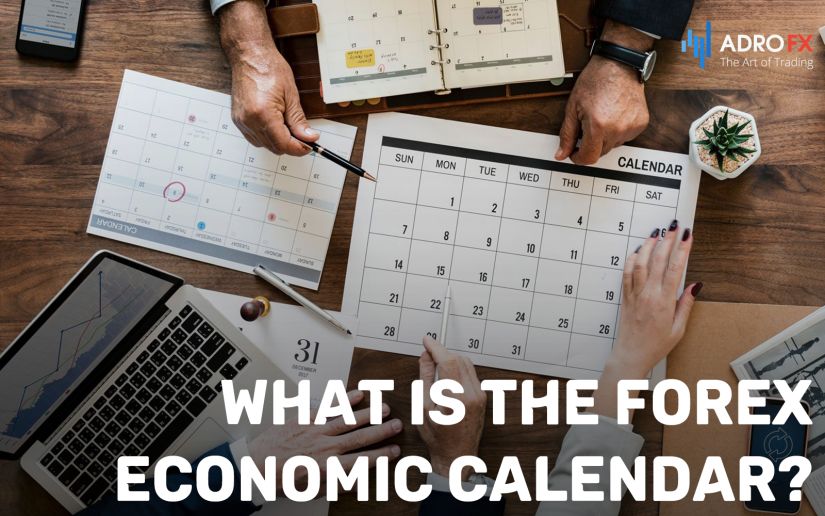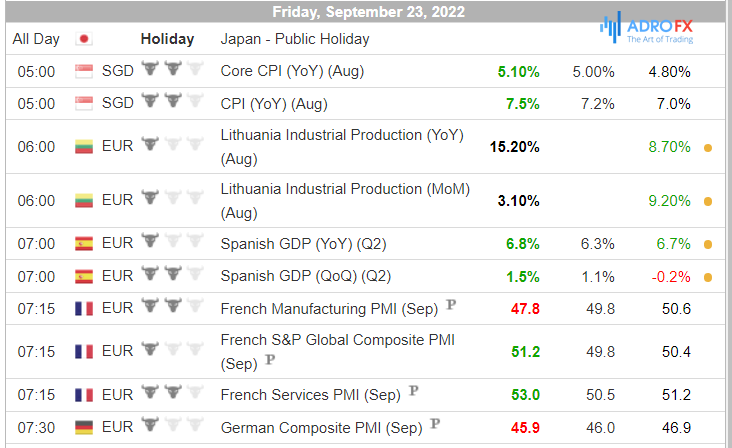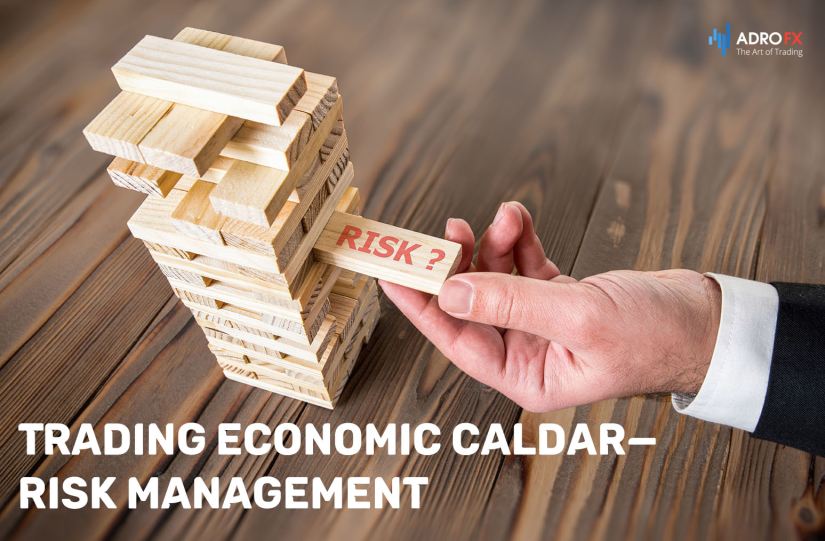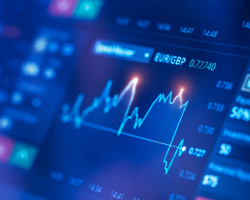Trading Forex Economic Calendar in real-time — Guide 2022

Forex economic calendar is one of the key services, which is necessary for the effective work of all traders. There is an almost constant flow of information with different content, which undoubtedly influences currency trading. A trader should be constantly involved in this information environment. It is the only way to make the right and timely decision. That's what the forex trading calendar is all about, with content such as identifying and recognizing the most important category of information flows. Such capabilities contribute to a better understanding of past trends and the construction of future operating fields.
Today we will learn more about the forex economic calendar, see how to interpret the news releases, and will discover what trading style to choose.
What is the Forex Economic Calendar?
The forex trading economic calendar shows macroeconomic indicators in different countries. It announces the scheduled time of publication, the importance of the news, and its impact on the price. Thanks to the table presented, the investor will be able to plan his actions and prepare for the event.
The data indicates not only the current situation but also introduces a person to past and planned announcements. All this information is very valuable for those who are planning to learn to trade on the news. The tactic involves the observance of simple rules but shows good results.
The economic news calendar includes a summary of various factors, which influence the rate of a certain currency. Its position on the international market depends a lot on the economic development and trade relations of the corresponding country. By tracking this information, a person will know how the volatility of the currency pair has increased and whether to expect a strengthening or weakening of the currency.
All the events in the table can be divided by their importance. The key news bulletins are usually represented by three bull's-heads or three dots. They are the ones that are recommended to focus on during the development of a trading strategy. The rest of the signal messages have no decisive value and can only act as confirmation of a trader's assumption.
Several groups of events can be observed in the economic calendar:
The unemployment rate plays a very important role because the more people are employed, the higher the standard of living in the given country.
Business activity indices indicate how well businesses are doing and whether production is booming. These factors can raise or lower the currency due to their impact on the economic power of the country.
The results of Central Bank meetings are of key importance in determining the exchange rate of the national currency. Revision of monetary policy conditions can make a quote go down or up. One-time fluctuations may be small, but in some cases, the decision of the head of the Central Bank creates a long-term trend, which is supported by panic or excitement in the market.
The level of unemployment targeting affects overall economic performance in the region. Government programs aimed at correcting the situation can change the market sentiment and affect the exchange rate of the national currency.
The main purpose of the calendar is to provide signals that can indicate a change or strengthening of the trend. The investor gets valuable information about price movement preconditions, but it is not recommended to place orders solely based on the news release. To confirm the signal received, it is necessary to use other methods of technical or fundamental analysis.

The market does not always react according to ordinary logic, so it is necessary to consider the situation from several sides.
Economic Calendar and News Impact on Major Currency Pairs
It is not a secret for anyone that it is a must to follow the economic statistics releases even to the most fervent opponents of fundamental analysis and news trading: forewarned is forearmed. Below you can find the major economic releases of the month for the key currencies.
US dollar (USD)
America starts the month with manufacturing and non-manufacturing PMIs from ISM (first and third day of the month, respectively). The first Wednesday of the month is NFP (Non-Farm Payrolls). The official NFP number is released on the first Friday and is also important. A Retail Sales report is released on the 13th day of the month, and the Consumer Price Index on the 16th day. Around the middle of the month, the Philadelphia Fed Industrial Average is released. The Fed meets eight times a year with no fixed date. Minutes are released three weeks after the Fed meeting - often this document has even more impact on the currency market than the meeting itself. Note that there are three estimates of the US economic growth: preliminary, revised, and final data (30, 60, and 85 days after the end of the quarter, respectively). The preliminary value is the earliest and, therefore, the most important for the market.
Euro (EUR)
Each month in the Eurozone usually begins with a meeting of the European Central Bank (first Thursday) followed by a press conference of the head of the regulator.
It is worth noting that since 2015 the ECB holds meetings less frequently, at intervals of six weeks. Broadcasts of the press conference of the head of the ECB in online format are available on the official website of the regulator. On the second or third Tuesday of the month, business activity indexes are published by the ZEW institute for Germany and the euro area. Preliminary data on the GDP of the currency bloc is released 45 days after the end of the quarter, i.e. on the 15th day of the month.
Pound Sterling (GBP)
The UK publishes the Manufacturing, Construction, and Services Business Activity Indexes on the first three business days of each month. The indexes provide the most up-to-date information about the state of the British economy. The Bank of England usually meets on the first Thursday of the month. In addition, in recent years, there is a quantitative easing - the Central Bank Asset Purchase Facility program, so along with the rate, the size of this program is reported. After 13 days, the Bank of England reveals the minutes of the meeting, and market participants learn about the voting balance of the Monetary Policy Committee (MPC).
The second decade of the month sees the release of UK labor market statistics: average wage index, changes in jobless claims, unemployment rate. UK inflation data is released 16 days after the end of the month and is important in determining the Bank of England's future policy.
Japanese Yen (JPY)
The schedule of meetings of the Bank of Japan is available on the website of the regulator. Meetings are held on different days of the week and in most cases are accompanied by a press conference of the regulator's management - usually, the results are announced on Tuesday, Wednesday, or Friday. Sometimes meetings are held twice a month.
On the last Friday of the month, Japan releases inflation data, an important factor influencing Bank of Japan policy. Note that the Tokyo core price index reflects inflation for the current month and the national price index for the previous month. In addition, at the end of the month in the Land of the Rising Sun, you can expect releases on Retail Sales and industrial production.
Forty-five days after the end of the quarter, Japan's preliminary GDP data is released.
Australian Dollar (AUD)
The Reserve Bank of Australia holds its monetary policy meeting on the first Tuesday of every month except January. Changes in monetary policy, of course, have a powerful effect on the dynamics of the national currency. On the 5th day of each month, data on the country's balance of trade, Retail Sales, and construction market is released. Pay attention to employment data and the NAB Business Confidence Index on the 10th day of the month. The minutes of the Australian Central Bank are published two weeks after the meeting, 11 times a year. Also worth watching is the quarterly inflation report.
Canadian Dollar (CAD)
Canada begins the month with the release of the trade balance and the number of permits for new construction. The fifth day after the end of the month is the release of the Ivey manufacturing activity index. The first decade also includes Canadian labor market statistics on changes in employment and the unemployment rate. In the middle of the month, look out for the manufacturing sales figure. Then there is the publication of inflation and wholesale and Retail Sales data. At the end of the month, the underlying Retail Sales Index is published, and GDP - the data are released monthly, with a delay of 2 periods.
How to trade with the Economic Calendar in real-time
To fully interact with the forex trading economic calendar, you need to understand its structure.

The first column contains the exact date and time of the news release. Paying attention to this indicator, a trader will plan his day in detail and come to the terminal on time. The second column shows the currency that is directly related to the event. The third column shows the importance on a scale of 1 to 3. This is followed by a short description of the events with a reference to the source. The last column shows the actual past, forecasted, and current outcome.
The following step-by-step instructions are suggested for working with the table:
- Prepare your workstation. Login to your MetaTrader account and all necessary analytical tools. Open the economic calendar in real-time.
- If necessary, adjust the tool to the required parameters. Choose the currency pairs, which bring the largest profit and are highly predictable.
- Check the time of the nearest news release on the selected currency. If the news is important, it should be taken into special consideration.
- Compare the previous value with analytical forecasts.
- Place an order for one of the pairs and wait for the news to be released. It is allowed to open several orders on different investment assets linked to a certain currency.
After the news release, it is necessary to look at the color of the actual result. If the indicator is colored red - open the position on the decrease, in green - on increase.
Experienced traders do not recommend entering the market a couple of hours before and after the news. The outcome of such orders can be unpredictable because the market is still in an overexcited state. The volatility increases preceding the quote changes its position too unpredictably. After closing a successful position on economic news, it is worth taking a short break and then starting trading during a clear corrective movement.
Trading Economic Calendar — Risk Management
With all the benefits of trading the forex trading economic calendar, it is important to remember the risks. The potential profit is huge - but so are the potential losses.
When trading the news, you must learn to make good decisions at lightning speed. Otherwise, there is a great risk of ending up on the losing side. Stop-Loss orders are also very risky when trading the news: due to sudden and strong price fluctuations, the probability of slippage is very high. Slippage occurs during times of high market volatility caused by news releases, which means that trades can close at a much worse price than you expect. Therefore, the risks need to be calculated very carefully.

What can you do to reduce the risks? Every experienced trader has his instructions in this case, while beginners can be advised not to rely on news trading alone. To become a professional news trader, you will also need to know how to work with basic indicators.
It is very desirable to secure against huge losses by setting the Stop-Loss - optimal distance of +/- 20 points from the price at the moment of opening of a position. Also, there is such a thing as Trailing Stop, which allows you to trail Stop-Loss after the price when it rises. It is highly advisable to use that order.
In this case, one can do without fixed Take-Profit, because Stop-Loss will drag behind the price up to its peak, and the trade will close automatically after the trend reverses.
Trading Economic Calendar — Example
The essence of strategy is based on the arrangement of two oppositely directed pending orders Buy Stop, Sell Stop, with the obligatory placing of Stop-Loss and Take-Profit levels for each order. Orders are placed before the news publication at a certain distance from the current price. Such a strategy does not require any special knowledge and skills and therefore is popular with most beginners in the forex market.
So, approximately 5 minutes before the news release, we place two pending orders, Buy Stop and Sell Stop, at a distance of 25 points from the current price. The number of points may be different for various currency pairs. A Stop-Loss order is set immediately at the moment of placing the main order for the same 20-25 points. The Take-Profit order is also placed immediately at the moment of placing the main order at the level of +30 to +80 points, depending on the strength of the news and the average daily volatility of the financial instrument. The time frame for trading the news release is М5, further on, when accompanying the position, it can be changed upwards. It is important to calculate the risks beforehand - the total loss when triggering both orders should not exceed the allowable percentage value.
Further development of events is closely linked to the dynamics of price and the degree of its reaction to the news. The best variant will be a triggering of one order and its further movement in the profitable direction. In this case, the non-working order is deleted and the position available is transferred to the breakeven level, and a trailing stop is activated in case of a prompt movement. If one order has triggered, and then the price has changed, and the second order has triggered, having received a stop on the first order, the profit on the second order can be closed only when it will cover the loss on the first order at least by half. You should always make sure that the average profit is greater than the average loss. Sometimes the price does not react actively to the news or react with a delay. The speeches of heads of central banks are the kind of news which price reacts to not at the moment the event occurs but in the process. The publication of economic indicators, on the contrary, elicits an immediate reaction, and often the price starts moving even before the news is published, especially when the preconditions for a trend continuation are in place. If the price does not react to the news after 15 minutes, it makes sense to delete the pending orders and use other methods of analysis. Perhaps this is the simplest, but still quite working strategy used by a large number of traders.
What trading style is best suited to using the Economic Calendar?
When it comes to figuring out the perfect time to place an order, all the expert traders agree that it is better to apply both forex trading calendar and technical analysis tools to make the most out of news-based trading.
Sticking to such a trading method allows traders to benefit from the news releases before and after it is published. That is why anyone trading stocks, forex, or cryptocurrencies should follow the economic calendar not to miss some important news, like an interest rate hike, which can dramatically change the situation on the whole market.
In such a way, traders will not miss out on profitable trading opportunities and handle the risks of already open positions.
Interpreting the Calendar
How to correctly assess events? It is necessary to understand which indicator will be important for a given country, even without special economic knowledge.

If Japan has been struggling with deflation since the mid-1990s, it is clear that the publication of inflation indicators will cause serious fluctuations in pairs with the Japanese yen. The U.S. is struggling with unemployment, so every labor market publication has an impact on the U.S. dollar's position against major currencies. Regardless of what monetary authorities say about the stability of the labor market, for example, the increasing number of initial jobless claims will tell the careful trader that "something is rotten in the state of Denmark," so it is not worth waiting for the currency to strengthen in the short term.
Another example. If the business activity index (PMI) in the manufacturing sector shows growth, the short-term growth of manufacturing orders and industrial production should be expected, which may cause the strengthening of the national currency. If consumer sentiment indicators are declining, it would be unsportsmanlike to expect an increase in retail sales, and it would be logical to expect a subsequent weakening of the currency.
It is not necessary to have an economic background to trade with the help of the forex calendar. Most sites providing calendars give short transcripts of almost all macroeconomic indicators, which is a great help in understanding the mechanism of influence of statistics on the further dynamics of the currency.
For every important fundamental release, there is a consensus forecast value, which is determined in advance by economists. If the actual value differs from the forecast value, market participants will be surprised and react to the news immediately. The bigger the surprise, i.e. the deviation, the stronger the market reaction will be. Historical data can be used to predict how strong the price movement will be due to a particular deviation. For example, if a currency pair consistently goes 50 pips on some deviation, we can expect that the same deviation will again cause a 50 pips price movement.
Basic rules for working with the economic calendar
Even though there are no classical rules for working with the forex economic calendar, we can highlight some basic principles that can greatly simplify its use to extract maximum profit.
- High-importance events have the greatest impact on the market. They are not published very often, but they seriously increase the volatility in the financial markets and can even lead to the end of the current trend. At the time of such events, some analysts recommend staying out of the market, especially for beginners.
- Particular attention should be paid to the results of meetings of the world Central Bank and speeches of their heads. Such events are the cornerstone of monetary policy, determining its prospects. Often Central Banks also give a brief analysis and forecasts of the economic situation in the country, which allows you to predict the future actions of monetary authorities and, therefore, determines the approximate trend of the currency.
- As it was mentioned, the rate of a currency is influenced by the economic statistics of its country. The USD exchange rate is influenced by US statistics, while the JPY exchange rate is influenced by Japanese statistics. However, it is worth noting that some statistics have an impact not only on its country's currency. For example, the publication of China's economic indicators has a direct impact not only on the currencies of its closest neighbors - New Zealand and Australian dollars but also on the performance of all risky assets, including the Euro.
- To make working with the calendar more convenient, you can install certain filters to get information only on the currencies you trade, because a normal economic calendar covers statistics from almost all countries, whose currencies are traded on the forex market.
- To better understand the events it is recommended to follow the comments of experts, who have specialized knowledge and special skills, can better disclose the statistical picture and pay attention to the presence of certain nuances.
- Trading solely based on fundamental analysis is the prerogative of experts, but the simple trader cannot do without it. That's why it's very important to follow the fundamental picture of the currency you want to trade in the mid and long-term, without forgetting about the technical analysis in the short term.
If you are not confident or skillful enough, you should not trade on the day when important economic events are published.
The offered rules are not an action guide, but the recommendations of active traders worked out in practice, allow simplifying the process of getting profit as much as possible.
Forex Calendar Trading — Conclusion
Using the forex economic calendar is a good way to expand the scale of trading opportunities and boost your results. The main thing not to forget is that sometimes the market can behave against the script and go in an absolutely illogical direction. There are lots of force majeure situations in the market, and sometimes traders have to deviate from the usual trading stereotypes.
About AdroFx
Being a well-established brokerage company, AdroFx offers the best trading conditions to its clients from 200 countries. Founded by experts with a couple of decades of the overall experience, AdroFx is one of the best platforms on the market for shares trading. Either a newbie or experienced trader, both will find here what they are looking for since the company provides various trading accounts for different trading styles and goals.









